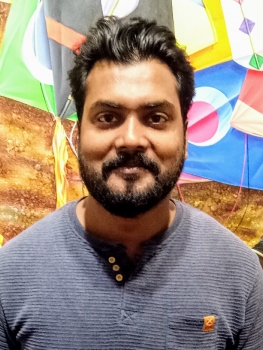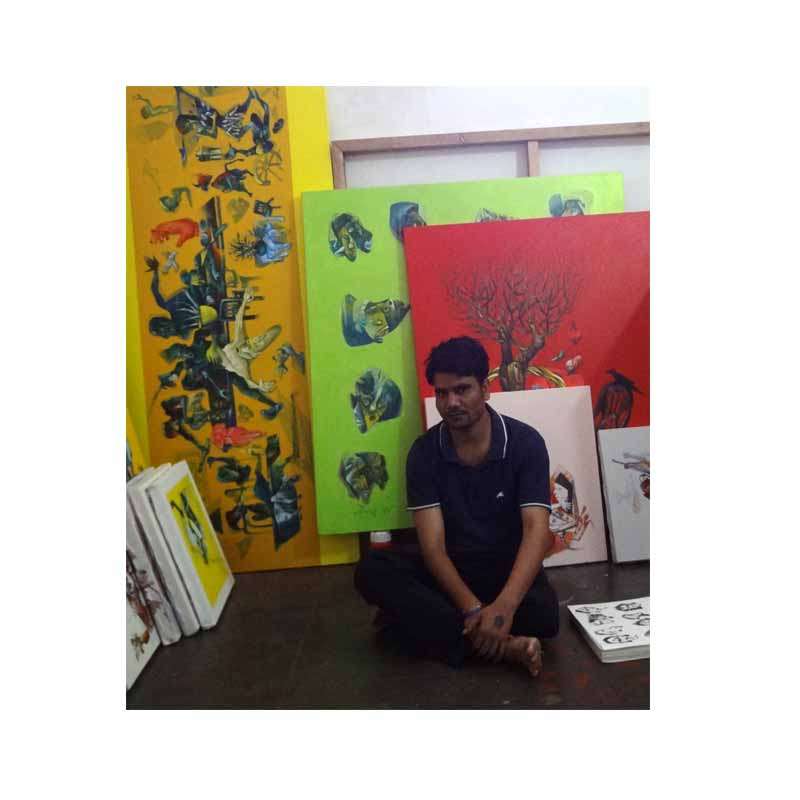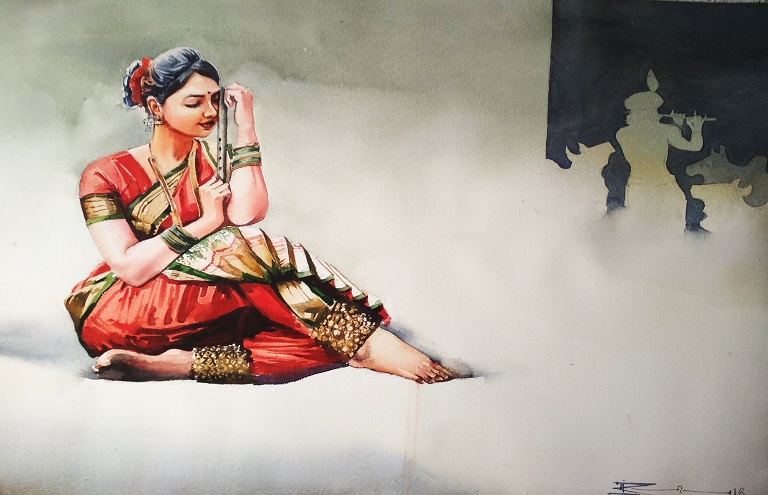
Painting faces can be quite intimidating if you are new to it. And if you plan to use watercolor for your portrait, it can become more challenging and difficult. Unforgiving and highly unpredictable, this is a little difficult medium to master. Its fluid nature makes it extremely tough to control, also correcting the mistakes is quite arduous. Unquestionably, working on watercolor portrait painting is going to be a challenging and demanding task, particularly for a beginner.
However, you do not fret! We have put together some essential tips and techniques together to help you paint your first portrait with watercolor with ease.
-
Do not aim for perfect likeness
While trying something new, most artists overburden themselves with a lot of expectations and end up feeling more daunted. If you are planning watercolor paintings of celebrities, you would want the portrait to look exactly like that particular personality. If you are just getting to learn to paint faces, this would be a very demanding task, making you more anxious. Take a deep breath and relax, this isn’t necessary at all, instead of attempting a perfect likeness, paint a portrait that looks like that specific person. Wouldn’t it be reasonable enough?
You can achieve a good likeness in your watercolor portrait painting with regular practice (lots and lots). Remember that all faces are constructed in basically the same manner with two eyes, one nose and mouth, always placed in the same order on the face. It is only the tiny nuances of each of these features, including their shapes and placement that makes each face unique and different from others.
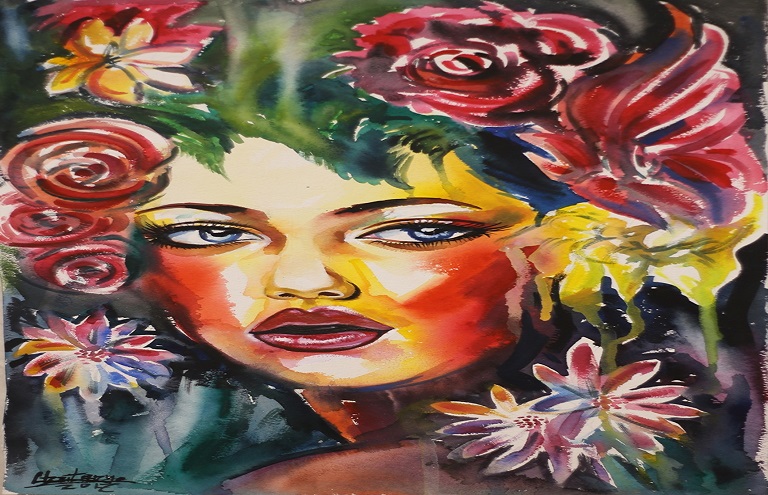
Also, this is dependent on your draftsmanship skill, particularly in observing and transferring the specific shapes and relative proportions of each of these features on the portrait.
As a beginner, this would be a more reasonable technique for you. It will make the task of painting with watercolor more approachable, and likely to help you paint more portraits and get better and better at this.
Do yourself a favor, be kind to yourself, and instead of overburdening yourself, moderate your expectations.
-
Master the basic proportions of human face
Being an artist, you surely must have observed that every human face is basically the same with the same features which are constructed almost in a similar manner. So, one of the most helpful things that you can do while attempting portraits is to get familiar (and gradually learn) those basic proportions. Getting comfortable with the precise details of the human face, such as which features line up with each other, their exact size relative to each other, will make it easier for you to paint a portrait.
Though these features are always pretty much where we would expect them to be, most artists, in the beginning, tend to make assumptions about their placement, instead of carefully observing what it is positioned actually. For example, most beginners think about placing the eyes in the top section of the face while it’s actually halfway down the face.
The simple task of observing (carefully) your subject always imparts a more realistic touch to your art, be it a portrait or even a watercolor landscape.
-
Begin with a front facing face
If you carefully go through the photos of your subject or even look in a mirror, you would find that all the proportions of the facial features (that you learned to observe above) are clearly visible only when the face is facing directly in front. With the head turned a little right or left, or a slightly up or down, those proportions go about changing significantly. For example, if the person turns his/her head to one side, the imaginary central line running vertically between the eyes appears to have shifted to one side and no longer seems at the center of the head.
So, while learning to master your watercolor portrait paintings, it is better to choose to paint a front-facing face looking directly at the viewer.
-
Lean to work small
No matter what medium you are using to paint your portrait, it is always better to start with a size that is easily manageable, quite often you would find scaling down is the best way to go.
All it means is that try to work small in the beginning. But it doesn’t mean choosing something having a size of the business card rather a more manageable sort of size, maybe 5”x7” or 6”x 8”.
Another crucial thing that you would find extremely helpful is having the portrait painting and reference photographs of roughly the same size. So in case you are printing out the reference image, try scaling it down to match your painting or if you choose an actual photo to work with, go for making the painting of a similar size. Having the reference photo and painting of the same size will make it much easier to capture the proportions more accurately.
No matter if it's a portrait or even a watercolor landscape, starting with something that you can easily tackle is always a good idea.
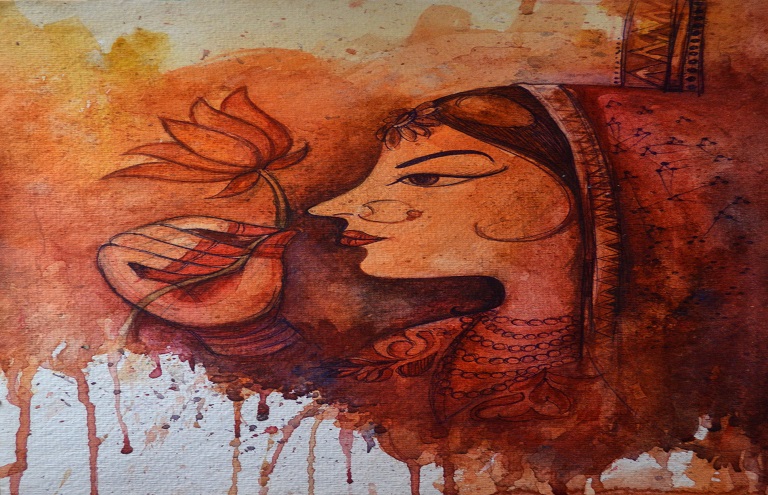
-
Look for values
Remember that value is of great significance in watercolor paintings, quite often more important than color. So, while working on the portrait, don’t worry too much about getting the skin tone of the exact color as of your subject. Instead, focus on getting the values right.
The best way to see the values accurately is to close your eyes slightly or maybe even more if you are comfortable. Lessening the information available for you, it would be easier for you to focus on the dark and light shapes. Putting these dark and light sections on the face in the right places will make your portrait come to life.
Focusing on simply the color makes the beginners think that black and white photographs are not a 3D subject. But, focusing on the darks and lights will help you understand that even these photos have unique forms and dimensions.
Read More: Tips for Artists: Learn the impeccable craft of Watercolor Paintings
Unquestionably, color is fun, so don’t hesitate to put in unlikely colors in your portrait that are not typical skin tones. You can very well achieve a fun, effective contemporary portrait with pops of orange, yellow, greens, blues, and purples in the face. As long as the value you put is right, you can simply get away with any color.
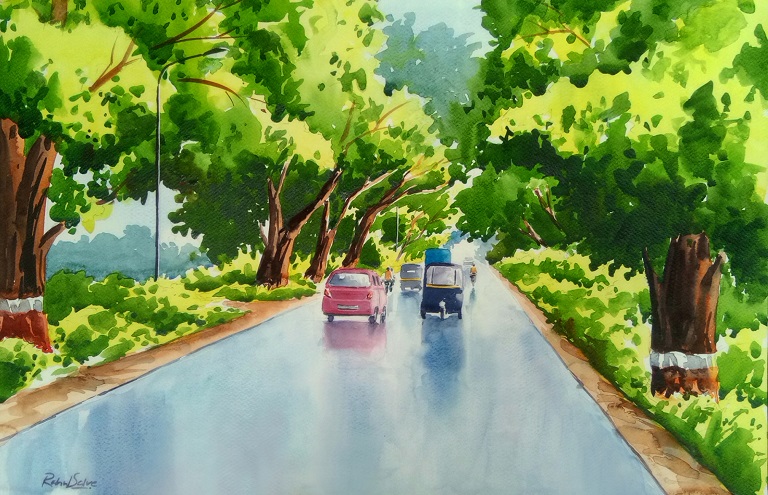
Since you are using watercolor, remember that you cannot paint light colors over the top of darker ones. Well, you may still proceed but they won’t look light as they actually are. Since watercolor is transparent, the layers lying underneath always show through. So, always go working from lighter shades to darker ones.
As watercolors are quite unpredictable, you might stress about not being able to make a mistake in your portrait. Well, to tackle this problem, adopt a loose approach. Also, mostly you can blot away a mark if the paint is still wet, or go about using the lifting technique to put a lighter portion back if you need to.
Don’t let any of these concerns restrict you from being bold about using the darks to contour the face of your subject. All you need is a good strong value contrast to give dimension to the face and paint a stunning portrait.
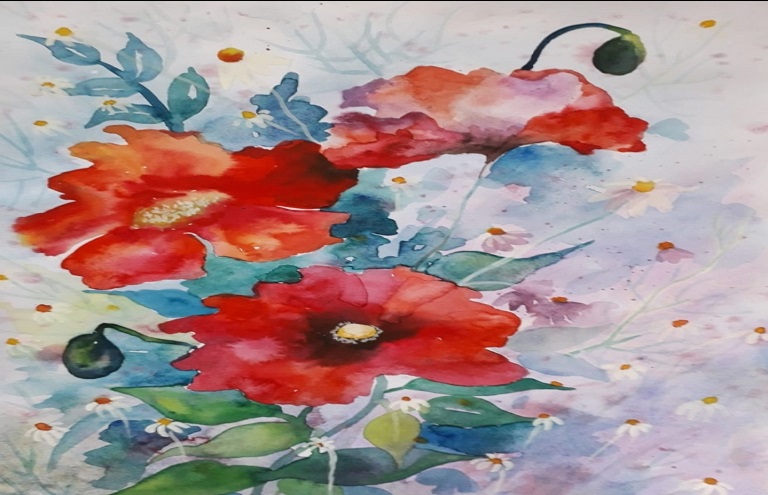
-
Avoid adding hard lines
The human face has very few hard lines, being covered with flesh most lines are quite soft such as wrinkles or edges. So, it is likely that as soon as you would start adding lines to your portrait, you would run the risk of making it look older, if you are not careful with those lines.
The simple way to get those lines right is to add in lightly (using a lighter shade) if the line you see doesn't seem important and ensure to soften the edges of the mark made with a clean damp paintbrush. If in doubt about the lines, don’t think twice but simply leave them out.
-
Remember less is always more
Undoubtedly, the human face is a very complex thing. With so many muscles and tiny bones under the skin, so many different parts aligned so to work together. Don’t let these details overwhelm you. In fact, being a beginner, you should simply try to forget all these complications and just focus on the bigger prominent shapes.
So, when you draw those features, don’t attempt to copy the minute details such as every eyelash or freckle, instead, stick to big shapes. Exactly like watercolor landscape, while doing portraits, less is definitely more.
.jpeg)
-
Give yourself a time limit
Giving yourself a time limit would help you prevent yourself from overthinking and being too critical of your work.
Also, while working on your watercolor paintings there comes a point when adding any more marks or colors makes it worse and not even a bit better. Obviously, you would want to stop before you encounter something similar. So, if you have the slightest inkling that your portrait might be finished, just put your brushes down. Continuing beyond will simply put you at the risk of losing the liveliness of loose watercolors.
With all the right techniques available, you are now ready to start painting. However, make sure to use these tips as a guide and do not stop yourself from experimenting or trying something new.
Go on and paint your first masterpiece!












